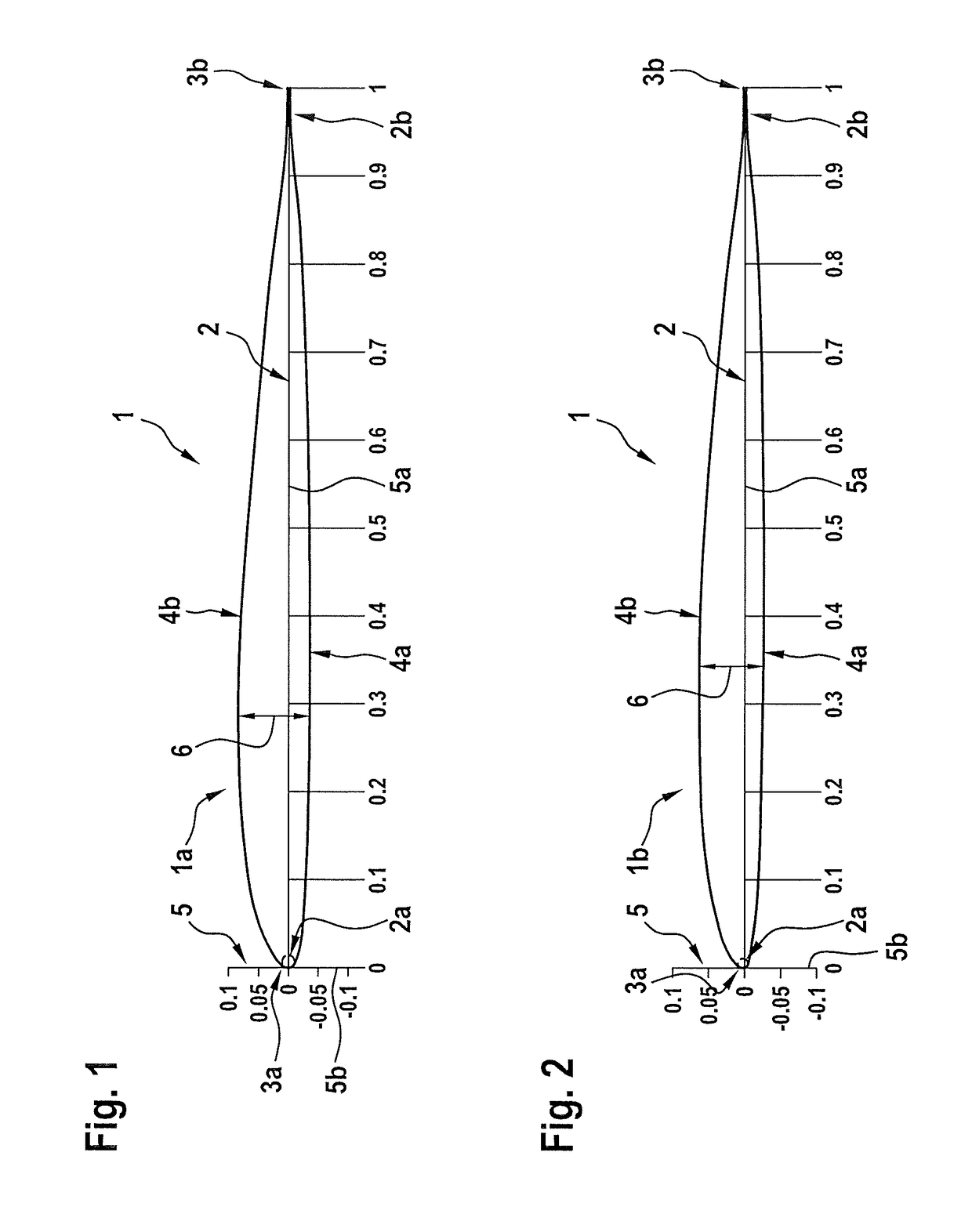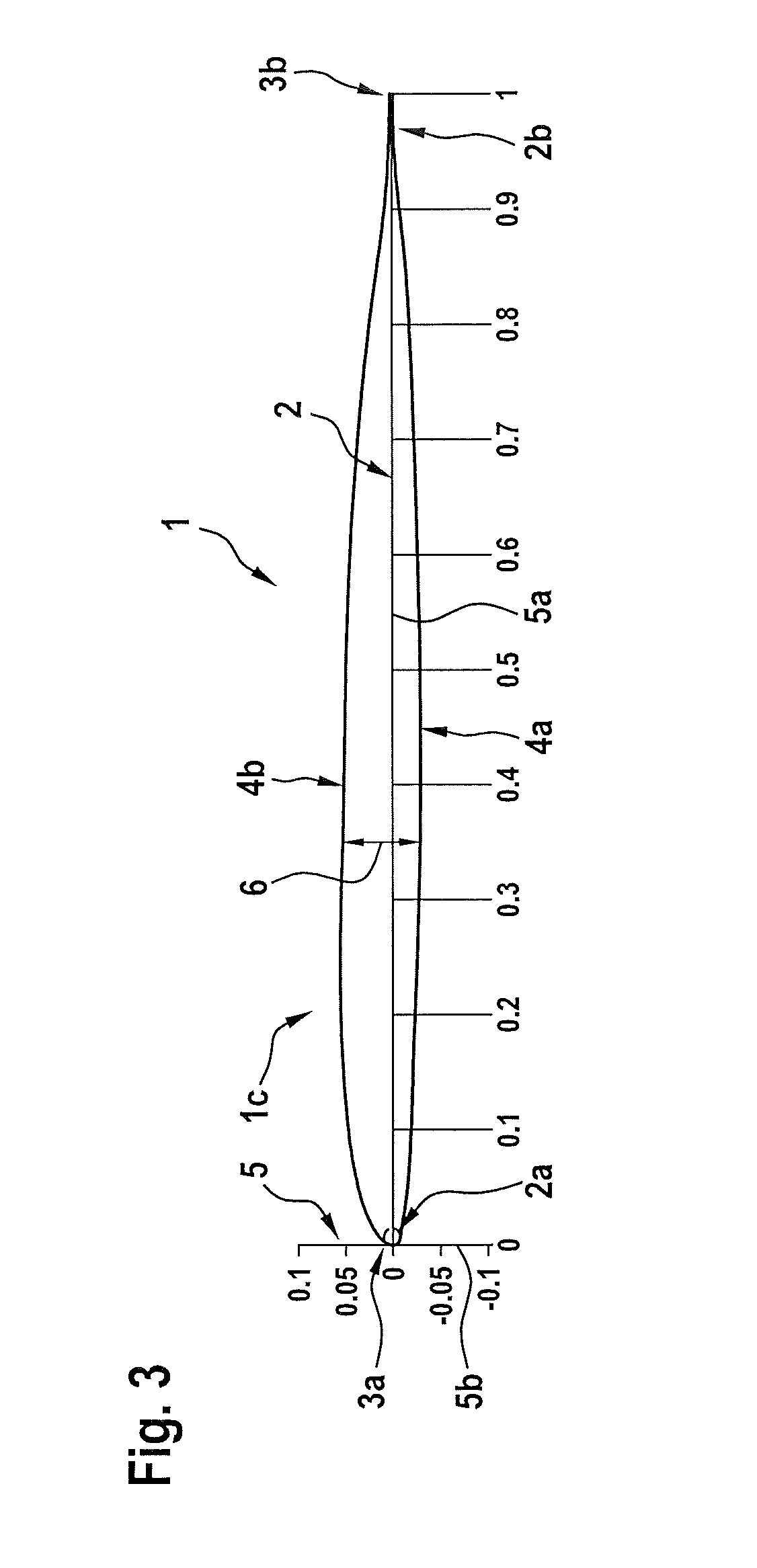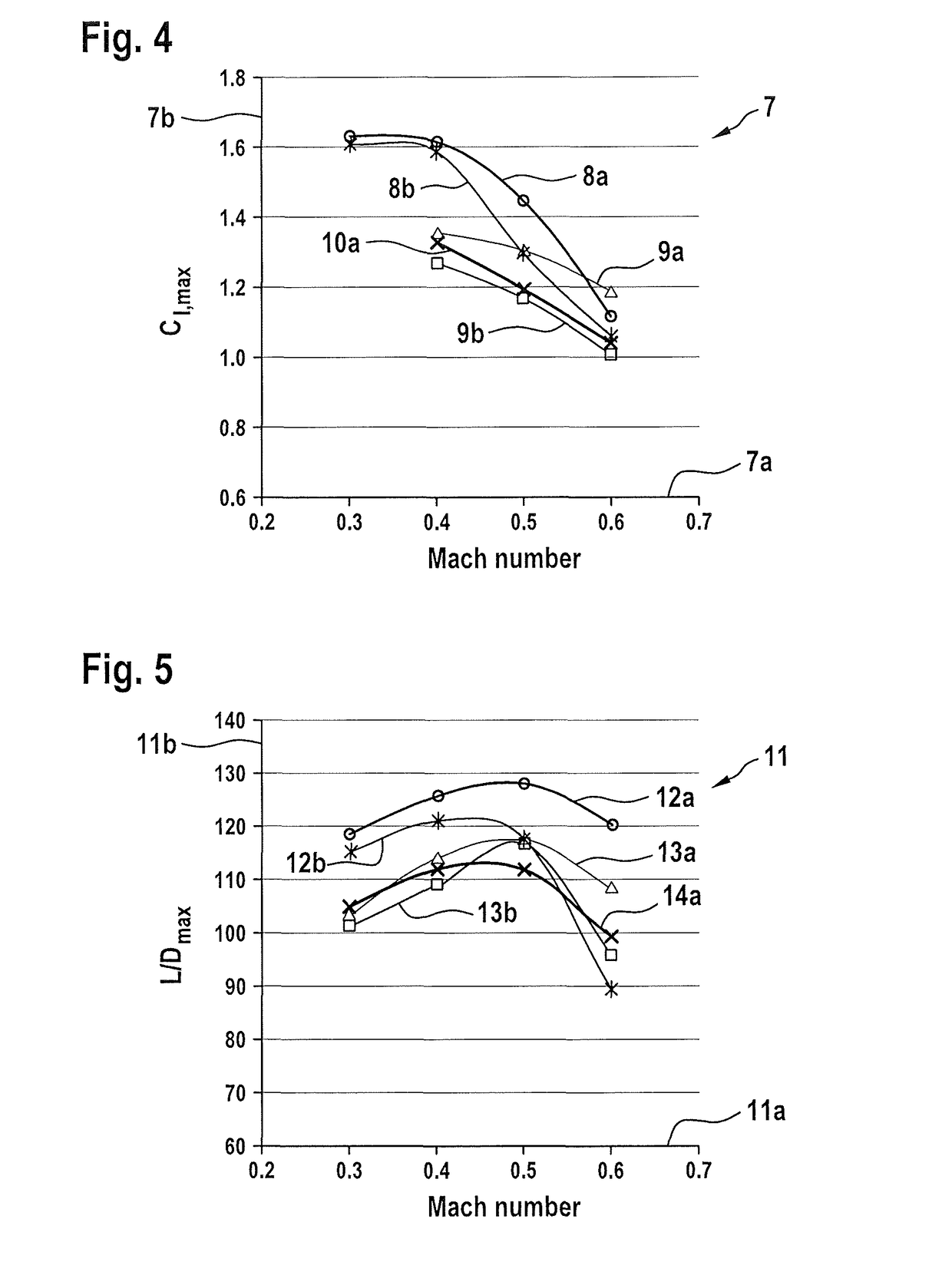Airfoils for rotor blades of rotary wing aircrafts
a technology for rotor blades and aircraft, which is applied in the direction of machines/engines, liquid fuel engines, transportation and packaging, etc., can solve the problems of restricted maximum lift capacity, comparatively high aerodynamic drag, and provide restricted hover and forward flight performances, so as to improve hover and forward flight performance, reduce aerodynamic drag, and improve maximum lift capacity
- Summary
- Abstract
- Description
- Claims
- Application Information
AI Technical Summary
Benefits of technology
Problems solved by technology
Method used
Image
Examples
Embodiment Construction
[0045]FIG. 1 shows a rotor blade 1 of a rotary wing aircraft that is provided with an airfoil 1a according to a first aspect of the present invention. The airfoil 1a preferably comprises a maximum thickness to chord ratio of 12%.
[0046]Illustratively, the airfoil 1a comprises a leading edge 3a and a trailing edge 3b, which are illustratively arranged on an airfoil chord line 2 of the airfoil 1a. The airfoil 1a illustratively further comprises an intrados 4a and an extrados 4b that extend between the leading edge 3a and the trailing edge 3b. The intrados 4a is defined by predetermined intrados coordinate value pairs x / c, yint / c and the extrados 4b is defined by predetermined extrados coordinate value pairs x / c, yext / c. Therein, x is a distance from the leading edge 3a to the trailing edge 3b along the chord line 2, c is a length of the airfoil 1a in chord direction, yint is a distance between the chord line 2 and a respective intrados surface and yext is a distance between the chord l...
PUM
 Login to View More
Login to View More Abstract
Description
Claims
Application Information
 Login to View More
Login to View More - R&D
- Intellectual Property
- Life Sciences
- Materials
- Tech Scout
- Unparalleled Data Quality
- Higher Quality Content
- 60% Fewer Hallucinations
Browse by: Latest US Patents, China's latest patents, Technical Efficacy Thesaurus, Application Domain, Technology Topic, Popular Technical Reports.
© 2025 PatSnap. All rights reserved.Legal|Privacy policy|Modern Slavery Act Transparency Statement|Sitemap|About US| Contact US: help@patsnap.com



